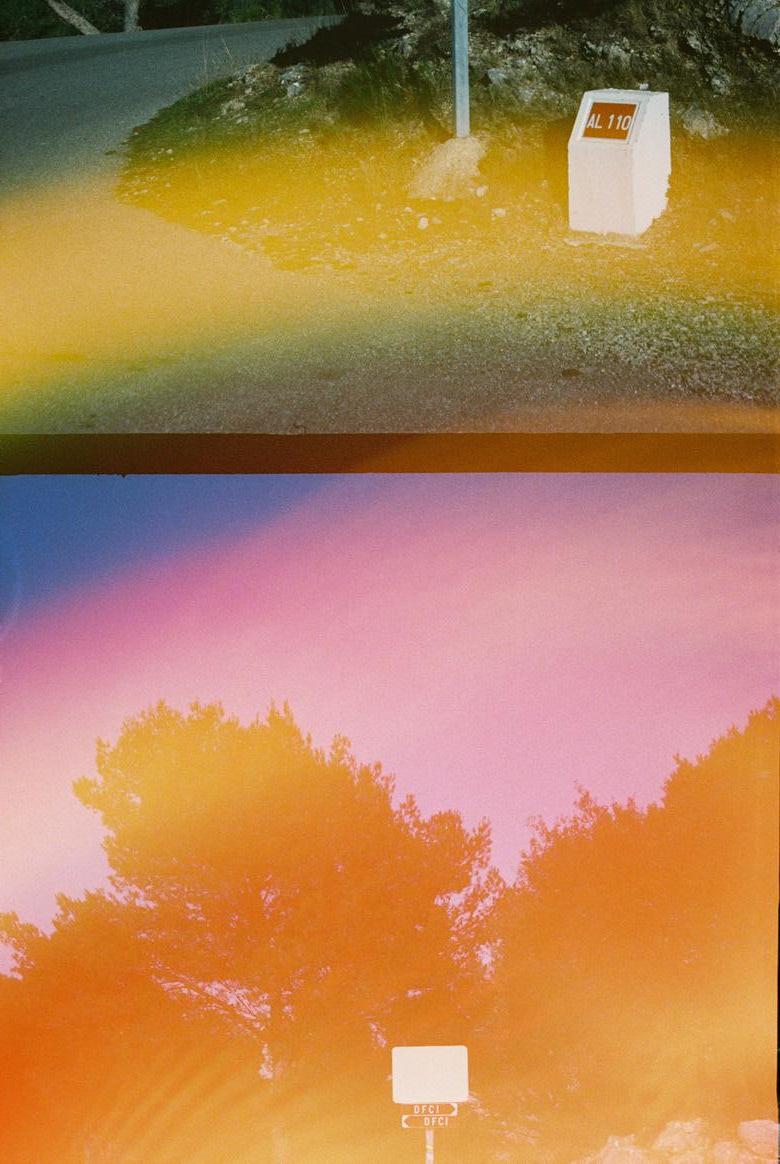
3 minute read
Emma de Felice - Accidental Attraction
Emma de Felice
Accidental Attraction
Advertisement
Before specialising in photography I had been studying contemporary art and whilst developing my artistic research, I always tried not to limit myself to the use of a single media to get over the stigmatisation of the photographic medium and to question the role of the photographer. Being born in the late 1990s meant to me, from a very young age, getting used to the presence of images and sometimes taking for granted their presence in my life, the ease with which I can share and communicate through them. Photography is everywhere in everything around us and it does not only lie in the act of taking photographs. Sometimes images themselves come to us, and it is up to us to accept them and be able to read them in a certain way.
I like to work with both analogue and digital photography, as much as I like to work with found images, archive pictures and phone pictures. When it comes to analogue photography, there’s an uncontrollable side and a certain slowdown in the production that I enjoy, giving me time and space to consider other aspects of the work.
In 2020, I made a self-published zine called This could be my family (and yours too).
The cover of This could be my family (and yours too), 2020
Inside double page of the book This could be my family (and yours too), 2020 picturing a portrait of a woman and a child

I often go to thrift shops and I once found a compact camera with an undeveloped film inside. The images turned out to be boring and intriguing at the same time, picturing a family reunion around a table. The first thought I had was: this could be my family and everyone else’s too. This could be your family dinner, you aunt’s birthday lunch, this could be my family’s yellowish archive pictures. This lucky discovery not only evoked a familiar atmosphere but allowed me to question family pictures’ aesthetics and standardisation. Why are these images so familiar to us? Is it because of the posing? Is it because we feel a connection to a similar past condition? They somehow work like a deja-vu. Many of us are used to looking through family albums for a certain atmosphere or a single detail that leads us to relive or reimagine the memory of a time that we have, or not, experienced. It is a voyeuristic gaze that takes pleasure in trying to grasp a memory that does not belong to us or to reinvent our memories all together. These photos do not belong to me or to anyone I know, yet I take pleasure in looking at them, in studying them. I like to play with them and I often try to build a narrative, I try to guess what’s going on, where the actions are taking place, when and who are these people.
A similar thing happened once again, I’ve been trying to guess where and when something happened. I sent a film roll to develop and when it came back and I scanned it, I found out that my images had overlapped with someone else’s. The pictures I had taken were taken in the mountains in the south of France. The ones that have overlapped are quite unrecognisable. Some decorative elements would suggest an interior, objects, patterns. For the rest, the layering has created effects of light and colour that give the images a supernatural aura. An unintentional effect that provokes curiosity in those who look at them, but above all, in me. I realise that I don’t have full control and credit for what I have taken. An accidental crash, a collision. I like to think of these images as a chance encounter that brings two worlds together and questions the ownership and authenticity of photography.

Image from the series Collision, 2019 showing a landscape with a pink flaw filter caused by the accidental juxtaposition with another picture

Image from the series Collision, 2019 showing a natural landscape accidentally juxtaposed to a mandala decoration









